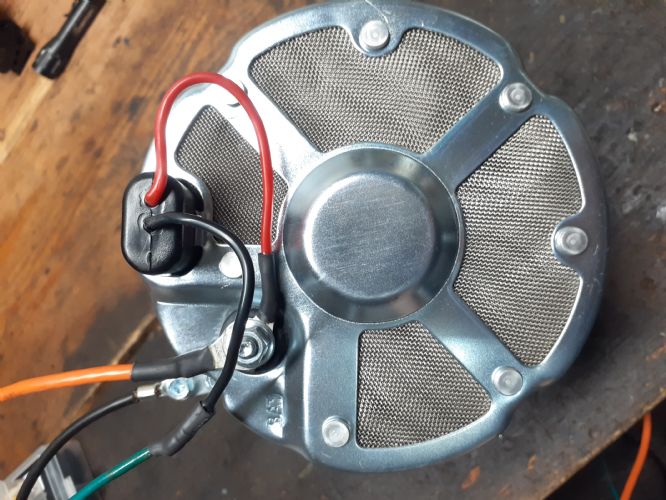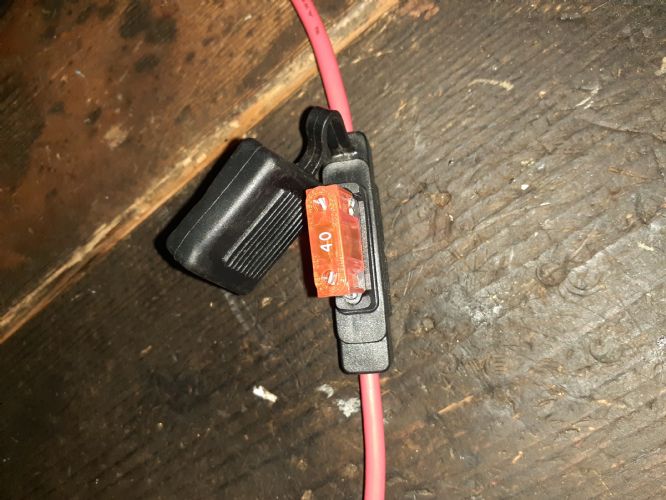Want to upgrade 351w alternator
Printed From: CorrectCraftFan.com
Category: Repairs and Maintenance
Forum Name: Engine Repair
Forum Discription: Engine problems and solutions
URL: http://www.CorrectCraftFan.com/forum/forum_posts.asp?TID=49605
Printed Date: November-26-2024 at 7:47pm
Topic: Want to upgrade 351w alternator
Posted By: Hysteria
Subject: Want to upgrade 351w alternator
Date Posted: February-09-2021 at 10:39am
|
Anyone have a suggestion for a marine alternator that will bolt up to my '76 Nautique with a 351 windsor? I'm not terribly familiar with these motors and am guessing some people on here have already been down this road before me. I'm not too concerned about the wiring configuration, just looking for a recommendation that bolts up without too many fitment issues and is decent quality. Thanks! |
Replies:
Posted By: KENO
Date Posted: February-09-2021 at 2:52pm
|
Is this a PCM 351? They'll all bolt up with very minor modification. The AMN 0002 will need a jumper wire between the "s" terminal and the output terminal and then it can be wired like in the mid 80's diagram below. They'll all do away with your external voltage regulator on your 76  The picture below shows where the jumper would go on the Mando style alternator. It's the strap between the "s" and output terminal with the black sleeve over it, but a 10 gauge wire works just fine.  |
Posted By: Hysteria
Date Posted: February-09-2021 at 3:51pm
| Thank you for the information! Yes, it's a PCM 351 in the boat. I'll get on DB electrical tonight and see if I can find a Delco that will fit, I'm just not sure about which model will bolt up to my motor. This is my first boat so I'm not familiar with any differences I would need to look out for with it being outfitted by PCM vs the normal 351 automotive application. I'm assuming the reverse rotation won't matter since it's rectifying AC current anyway, but correct me if I'm wrong on that. |
Posted By: KENO
Date Posted: February-09-2021 at 4:14pm
|
Link to a 1 wire marine Delco style below Link to a 3 wire marine Delco style below http://www.dbelectrical.com/products/delco-marine-alternator-mercruiser-3-wire-63-amp-10si.html" rel="nofollow - link Reverse rotation doesn't matter electrically and the cooling fan flow is plenty in either direction Remember, more amp capability like the 100 amp plus ones that they have for example, (that I didn't link), means heavier wiring, bigger main breaker if your 76 has a breaker  |
Posted By: Hysteria
Date Posted: February-09-2021 at 4:49pm
| Thank you for the links, that takes the guesswork out of it on my end. I'll be rewiring the whole boat so everything will be sized appropriately for its load, but that's a great point to make |
Posted By: Nautiquehunter
Date Posted: February-10-2021 at 6:56am
| I just put a DB 1 wire on my 67 Mustang 351w . |
Posted By: Hysteria
Date Posted: February-10-2021 at 7:31am
| How do you like it? I went ahead and ordered a 3 wire last night from the link KENO provided |
Posted By: fanofccfan
Date Posted: February-10-2021 at 10:11am
|
I have had the one wire for several years. works great and less confusion for my sometimes confused mind! ------------- 2004 196 LE Ski 1969 Marauder 19 1978 Ski |
Posted By: KENO
Date Posted: February-10-2021 at 3:10pm
Hysteria, here's a post from a thread a little while back talking about 1 wire and 3 wire alternators. Either one will work good for you 
|
Posted By: Hysteria
Date Posted: February-10-2021 at 3:27pm
| Another highly informative post. I ordered the 3 wire to avoid the issues you outlined with exciting the field, and I also like the idea of having control over the voltage reference that the alternator uses. |
 Hysteria wrote:
Hysteria wrote:


